Case Study.

How angry is your community, really?
Social Listening and Sentiment Analysis for Data-Driven Brand Management
Summary :
Everyone today has the ability to voice their opinions on Social Media. These opinions have serious potential to influence a brand, product, or project. It is important therefore to have a good social listening strategy in place so you can monitor the conversation happening around your brand. Responding to the concerns and desires of your audience, customers, or constituents will keep you in the know, create actionable insights, and ultimately help you excel at what you do.
Background :
We recently took on a social listening mandate for an infrastructural project somewhere in Switzerland. Our task was to monitor the reactions and opinions of relevant audiences. Feelings were heated—some people were strongly opposed to the project while others were firmly in support. We were called in to understand the objections, evaluate their prevalence, their relevance, and develop a strategy to respond to them.
Objectives :
After consultation with the client and some internal strategizing, we set the following goals:
- Evaluate the proportion of positive and negative community feedback.
- Understand the trends present in this feedback, specifically concerning how and where the community tends to express support or opposition.
- Understand whether the negative feedback was actually representative of the community sentiment and gain a more precise picture of approval rates (positive or negative) on Social Media platforms.
- Analyze the nature of opposition or concern in terms of specific topics and arguments.
- Develop a responsible and durable strategy to manage and respond to community concern or opposition.
Data-gathering process :
- We created a series of four Social Media publications on topics relevant to the project. The four topics were: local tourism, job creation, traffic, and environmental impact.
- We monitored the community responses to each of these four publications which effectively functioned as platforms for voicing opposition (or support!) and allowed us to hone in on the real points of contention.
- For each topic, we then extracted, aggregated, and organized the various comments left by the community according to sentiment, positive or negative.
- With our system in place, we carried out a close analysis of the comments in order to better understand the concerns voiced by the community.
- We then classified our findings thematically according to their main argument(s) and created a workable data set.
Data-driven findings :
In total, we collected 244 comments and 3913 non-verbal reactions from our 4 publications. From our analysis we were able to establish the following:
- Although the majority of comments were negative, they were the result of a very loud minority:
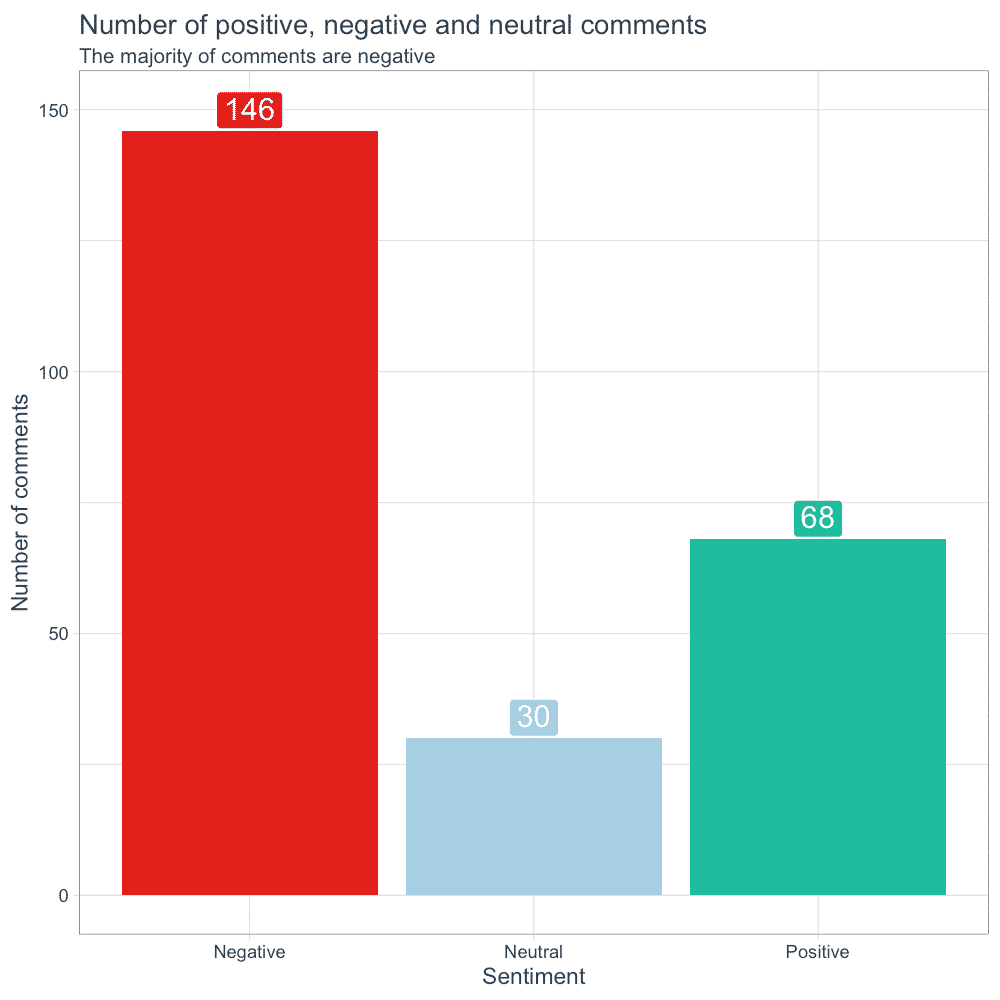
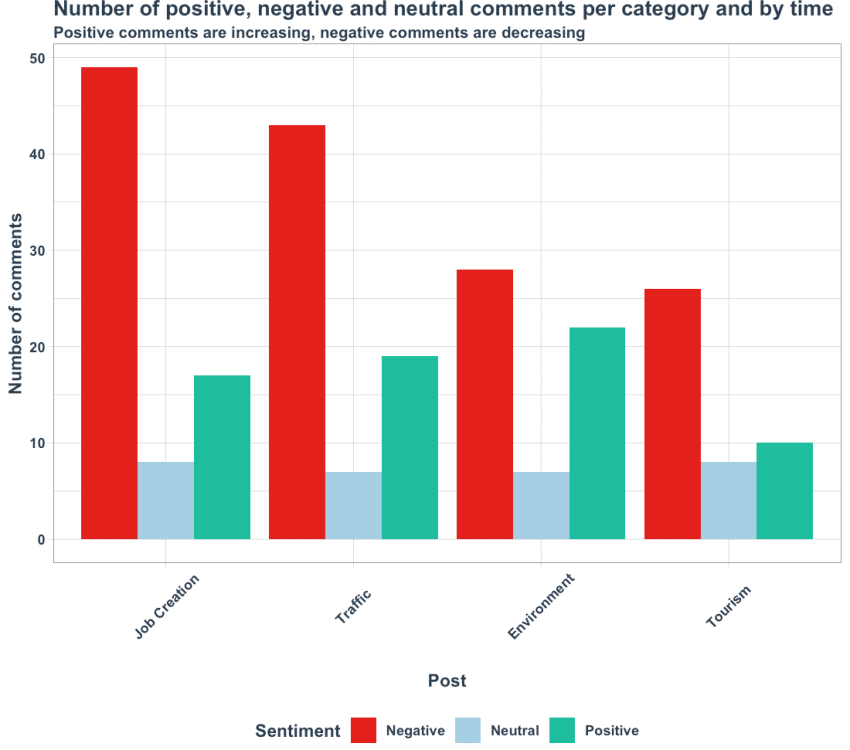
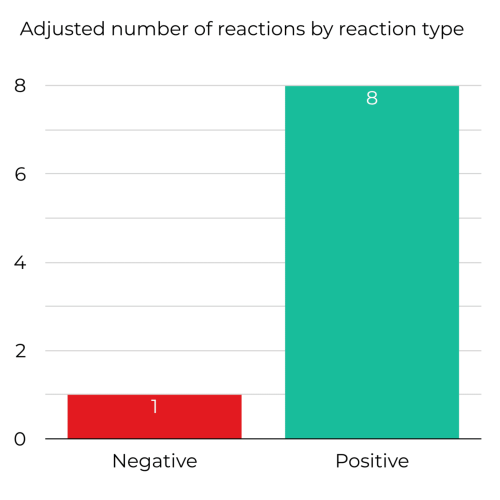
- A majority of comments voicing opposition to the project tended to fall into a relatively small subset of argument categories.
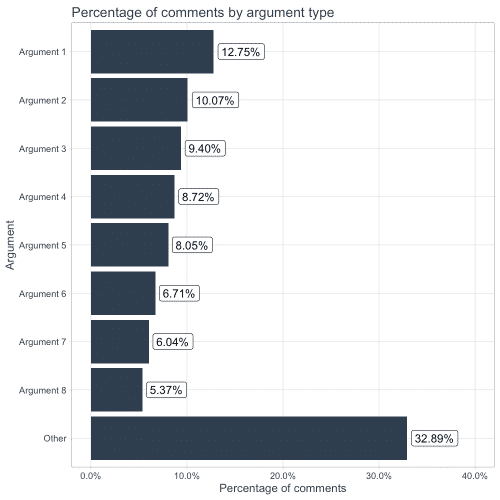
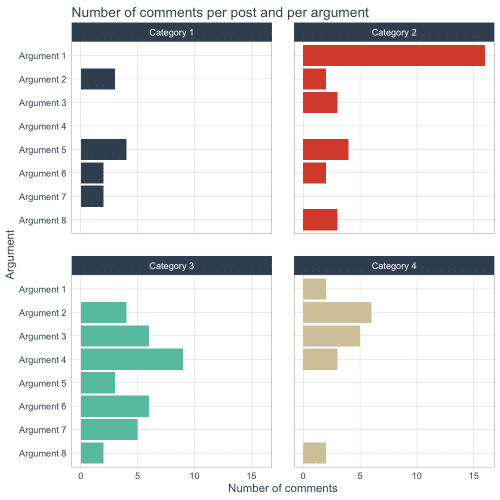
For example, we found that 12.75% of comments followed the same basic argument and were overwhelmingly concerned with the question of local tourism. In addition, 70% of comments fell into the same eight categories.
- The prevalence of negative comments was diminishing steadily over time.

As our engagement with the community progressed, so did the positive responses. Effectively, the more we communicated, the less negativity was generated. This strongly suggested that by addressing negative community feedback directly, we were helping to ease concerns and reducing opposition to the project overall.
Actionable insights :
- A significant proportion of the community would be satisfied by detailed answers acknowledging and addressing their concerns. Create a thorough FAQ section on the project website that addresses the most frequently raised objections, arguments, and questions.
- Do not run from opposition, embrace it. Create a content strategy that addresses the opposition’s main arguments head on.
- Address first of all the topics that are most contested in the comments and continue through the list of topics in a descending order of importance. Don’t forget to reference the FAQ in these publications.
- Develop audio-visual content such as videos or podcasts that directly address the main arguments raised by users in the comments.
- Every negative comment is an opportunity to educate the community and move the conversation forward in a constructive manner.
- Create standardized answers for each argument so you can address individual comments directly and invite users to consult the FAQ and long-form publications.
- If users are particularly enraged, respond politely with substantive arguments but do not engage in hostile behavior.
- Publish the positives! Despite the need to face opposition head on, do not publish solely on negative topics and avoid posting publications that elicit too many negative reactions.
PROJECT DETAILS
CLIENT
Infrastructural Project
CHANNELS
Social Media
CATEGORY
Data Science, Social Listening

